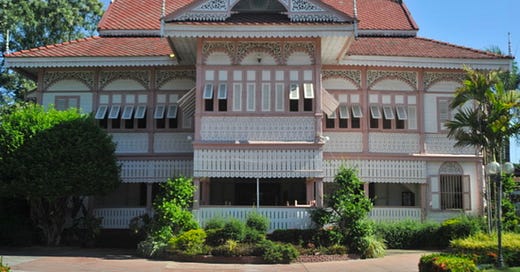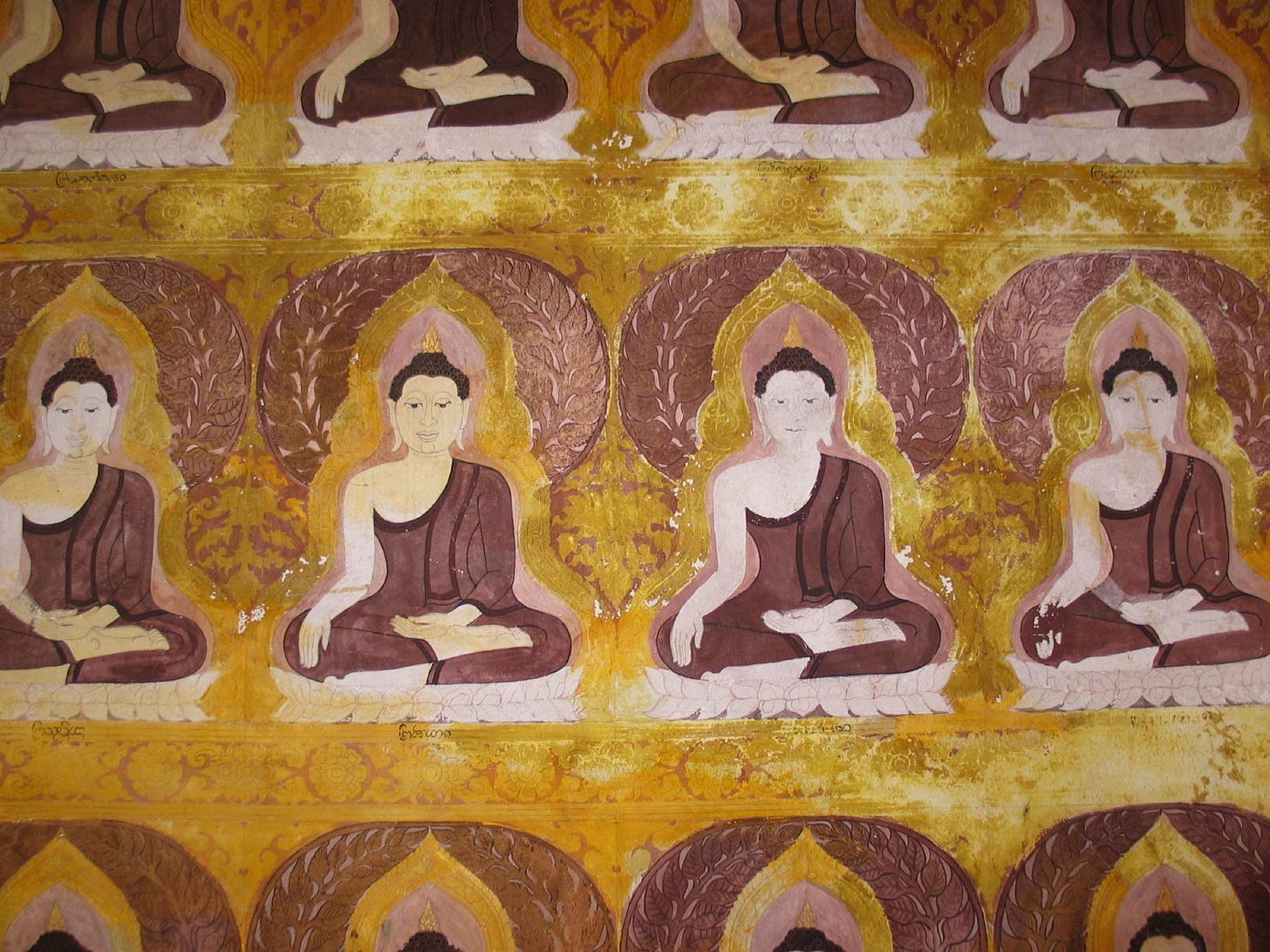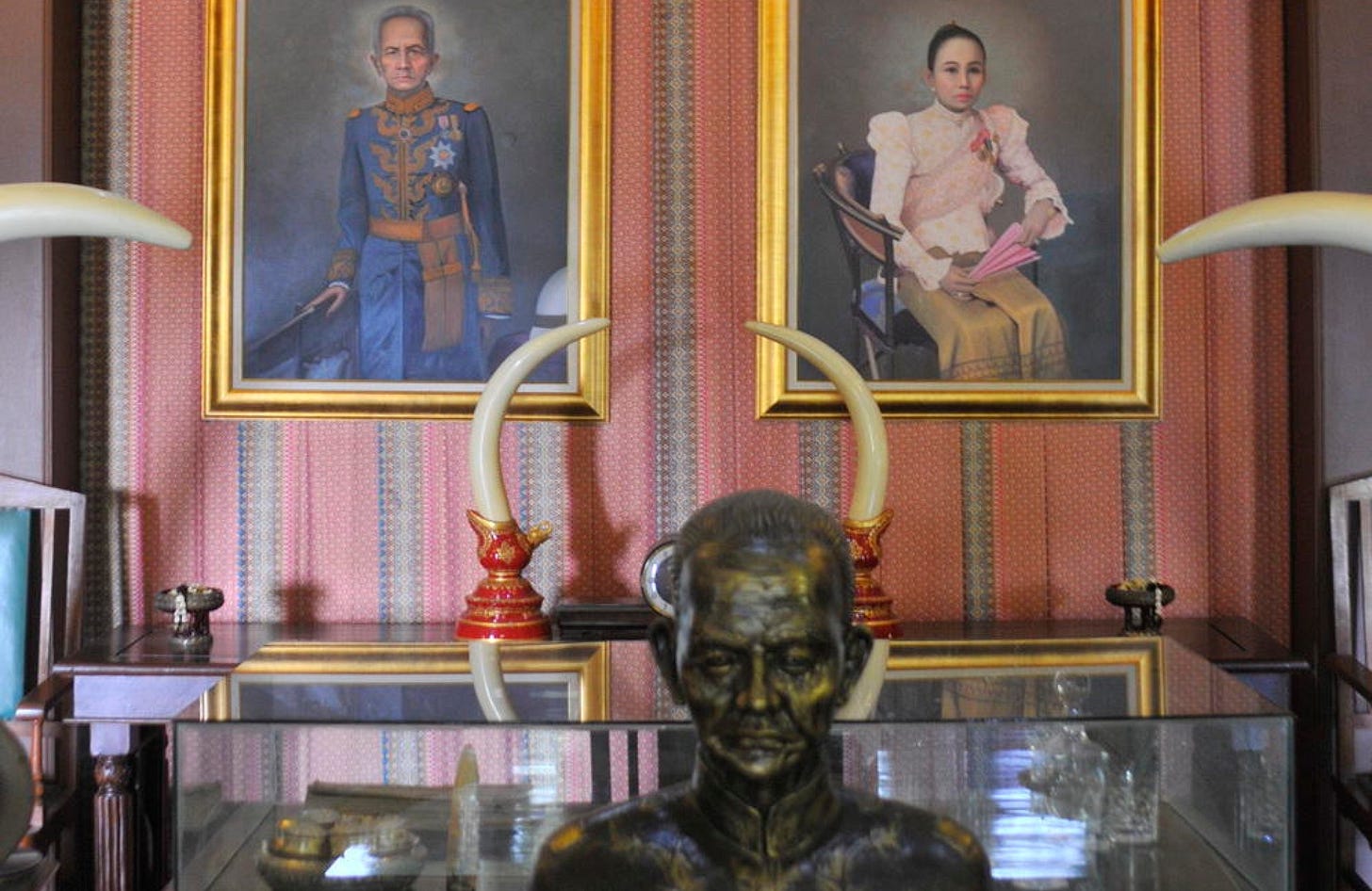Phrae (map link) sits out of sight and out of mind for many. North of the railway to Chiang Mai, the city attracts few foreigners—I’m perhaps the only one in town. This, despite a rich and varied history and a lip–smacking culinary scene. All the more reason to visit, I think.
Founded in the eighth century, the isolation that keeps tourists away also assisted Phrae’s relatively long period of independence. It wasn’t till the 19th century, in the midst of a teak logging boom, that the region fell into line.
As with other Thai walled cities, Phrae long ago burst beyond its more than 1,000-year-old red brick walls. For me though, the downtown attractions are all within the city walls, making it a great walking town. I’m staying in the old city, at the cute meets slightly cooky Priwan’s Homestay. Priwan is on my case to take one of her free bicycles but, for the umpteenth time, I say I’m happy to walk. She relents, and I’m off.
I start not far from Priwan’s, at the intersection of Charoen Muang and Rop Muang Roads. Heading north along the latter, I follow the original wall. It is a public park of sorts today with a moat on the far side.
I pass by the Baan Thep Museum, one of a number of spectacular teak buildings in Phrae, then curl to the northwest. The outline of Phrae’s city wall is avocado shaped, and just shy of the tip, I dogleg in one block to a local khanom jeen place. Time for a second breakfast.
Temple detail at Wat Luang. Photo: Stuart McDonald.
Served up by older Thai women on the ground floor of a pretty wooden house, the bowl is delicious. The fresh white noodles have that perfect texture. In a nod to Phrae’s meat obsession, aside from fresh bean sprouts, cubes of congealed blood gently bounce on top.
Continuing south on Kham Saen, I reach Wat Hua Khuang with an ancient brick chedi overlooking a modern temple. Then, reaching Charoen Muang, I turn north (right) and on my left, across the road is Wat Si Chum. Just before reaching the wat, I turn left down Soi Si Chum, passing with the temple on my right. I have a different wat in my sights.
All in a row at Wat Luang. Photo: Stuart McDonald.
A couple of blocks down on my right is Wat Luang—believed to be the oldest wat in the city. The large brick construction is not a chedi, but was originally another city gate: Prathu Khong—for the use of royals only. Today Phrae locals believe it houses the spirits of royalty and former rulers.
At this point I break my walk for a real meal break. Phrae is famous for Phrae–style laap. Writes Austin Bush in The Food of Northern Thailand:
“In Phrae, laap and similar dishes are probably most notable for being eaten uncooked. It’s sweeter, more delicious, I was told by many a diner. Yet locals’ preferences don’t stop at raw beef; Phrae–style meat dishes also include ingredients such as pork, blood, liver, tripe and beef bile, all of which are often served uncooked.”
I grab a motorbike taxi and scoot a little out of town to a place recommended by Austin, named Jin Sot—an open air place boasting a veritable cornucopia of uncooked animal. I pass on a serving of luu muu (raw pig’s blood with a heavy dose of spices over crispy noodles and offal) and instead go for the classic Phrae–style laap. It would be an understatement to describe it as a gamey version of the more typical laap I’m used to, but, accompanied by sticky rice, a plate loaded with fresh herbs, and a couple of frosty Chang beers, it goes down a treat.
Sated, I get a scooter back to where I left off and continue, pressing on to Wongburi House—Phrae’s most memorable relic of the teak period. Dating to the late 19th century, the two-storey teak mansion has housed both royalty and teak magnates in its time.
Who hasn’t made one of these out of dough? Photo: Mark Ord.
Today it is an excellent museum. An amalgam of Thai and European influences, this is in part a Thai take on the “gingerbread” form. A late 19th century colonial invention that originated from French mansions in Haiti. Gingerbread houses make use of elaborate, flamboyant features and bright colours. Why? To resemble model houses built by children out of gingerbread dough.
If I had any doubts about the wealth floating around teak, they’re dispelled at Wat Phong Sunan next door. It was once the private family temple for those living in the Gingerbread House.
My last sightseeing stop is the Khum Chao Luang Museum, further up Kham Lue Road. Built in 1892 during peak teak times, this is as grand as teak mansions in Phrae get.
No shortage of tusks back then. Photo: Mark Ord.
The presentation is as exotic as it is romantic. Faded photos cover many of the walls. Beautiful but long-dead princesses, elephants haul logs through forests, dignitaries with toy-town uniformed bodyguards. While off-limits to the public, the basement is where slaves and misbehaving staff were punished and hidden away. Note this isn’t on the regular tour.
From here it is just a short walk back to where I started and lo and behold the night market is just setting up. How convenient!
More on Phrae tomorrow. See you then.

















Share this post